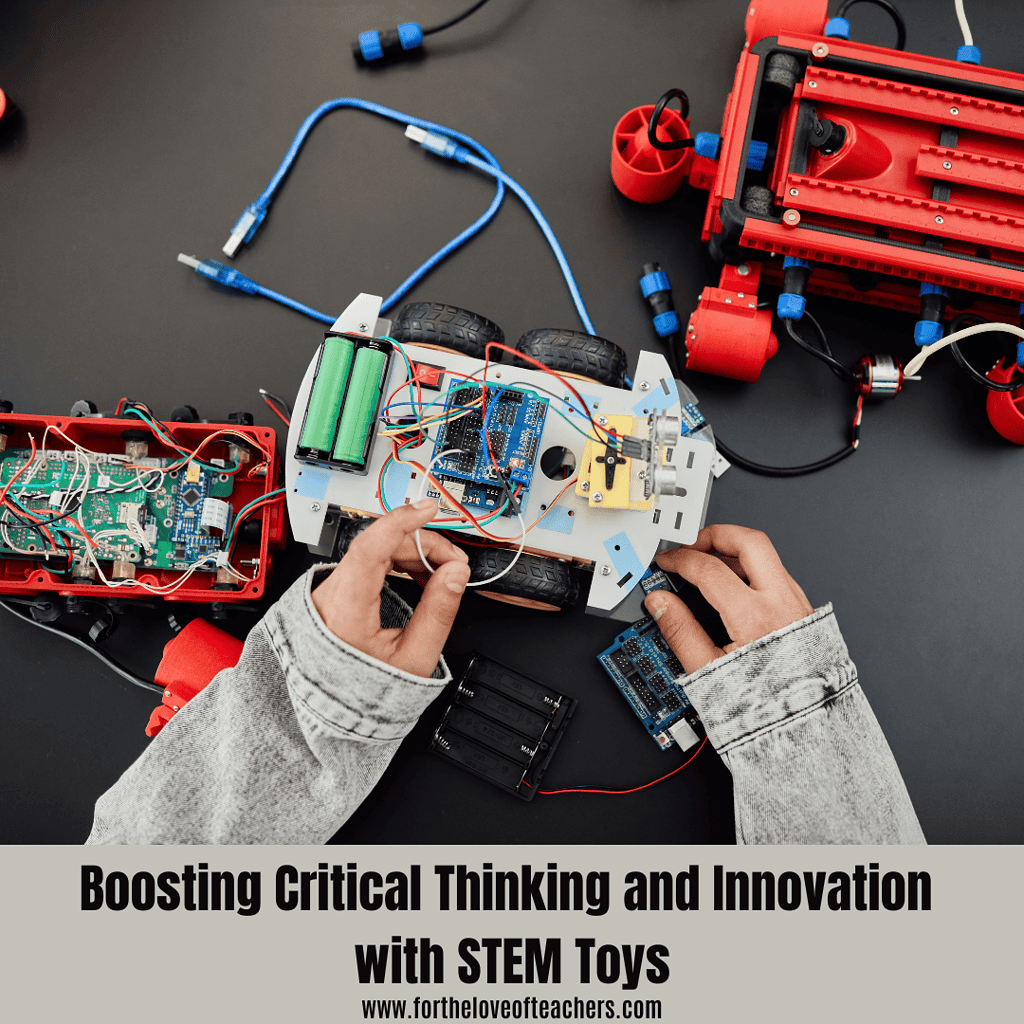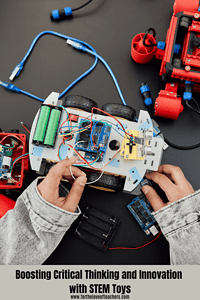One of the most effective ways to nurture a child’s cognitive development is through early exposure to engaging STEM activities. STEM (Science, Technology, Engineering, and Mathematics) focuses on equipping children with critical thinking, problem-solving, and innovation skills.
Exposing children to STEM concepts from a young age is crucial, as it helps them develop an understanding of complex subjects in a fun, engaging manner.
An effective method of introducing STEM education to children is through STEM toys. These toys are designed specifically to develop core science, technology, engineering, and mathematics skills in a playful, hands-on way.
Unlike regular toys, which may focus primarily on entertainment, STEM toys challenge children to think critically, solve problems, and engage with complex ideas such as coding, building structures, or conducting experiments.
Enhancing Critical Thinking
STEM toys excel at encouraging children to engage in problem-solving, reasoning, and logical thinking by involving kids in the learning process. Through trial and error, kids learn to break down complex challenges, identify patterns, and devise solutions. This hands-on approach to problem-solving hones critical thinking skills, as children are continuously faced with new challenges that stimulate their cognitive development.
For example, building kits like LEGO sets require children to use spatial reasoning and logical thinking to assemble structures. Kids must follow instructions but also have room to experiment with their designs.
Similarly, coding games introduce children to basic programming concepts by encouraging them to solve puzzles step-by-step. These challenges require children to hypothesize, test different solutions, and iterate on their ideas — valuable skills that sharpen their ability to think critically and creatively.
STEM toys also teach children how to approach problems with patience and persistence. Whether they’re programming a robot to navigate a maze or completing a challenging puzzle, children learn that trial and error is a part of the process. This iterative cycle of testing and improving solutions is essential for developing problem-solving abilities and preparing kids for real-world challenges.
Encouraging Innovation and Creativity
Beyond critical thinking, STEM toys nurture creativity by allowing children to design, build, and experiment with their ideas. Open-ended toys, such as robotics kits or 3D printing pens, empower children to explore endless possibilities. These toys foster an innovative mindset by providing the tools to transform abstract concepts into tangible creations.
Much like how kids play with Nerf blasters for outdoor battles for imaginative play and open-ended adventures, STEM toys offer a similar sense of creative freedom. With robotics kits, for instance, children are not restricted by preset instructions; they can experiment with different ideas and approaches — building robots that reflect their unique vision.
Likewise, 3D printing pens allow children to create three-dimensional objects from scratch, blending art with engineering. These toys spark imagination while encouraging children to think outside the box, teaching them that innovation often arises from experimentation and creativity.
Developing Hands-On Learning and Collaboration
One key advantage of incorporating STEM toys into children’s playtime is hands-on learning. These toys engage children in interactive learning experiences where they can manipulate objects, experiment with different solutions, and observe the results of their actions in real-time.
This hands-on approach makes learning more interactive, memorable, and fun. Children retain information better when actively participating in the learning process, and STEM toys offer the perfect balance of play and education.
Moreover, many STEM toys encourage collaboration, allowing children to work together to solve problems or build projects. These collaborative experiences improve problem-solving and social skills as children learn to share ideas, delegate tasks, and work towards a common goal. Working together on STEM projects teaches kids how to collaborate effectively, an increasingly important skill in today’s team-oriented, tech-driven world.
Real-World Applications
STEM toys are valuable for the cognitive skills they develop and their ability to introduce children to real-world concepts. Toys that focus on coding, engineering, and scientific experimentation prepare children for future career paths in tech-driven fields. Early exposure to STEM ideas through play helps children become familiar with complex subjects, making them feel approachable and exciting rather than intimidating.
These toys lay the groundwork for understanding real-world applications of STEM knowledge, such as software development, architecture, and scientific research. By playing with STEM toys, children gain a head start in developing skills that are essential for success in future careers.
Conclusion
Incorporating STEM toys into children’s learning provides numerous benefits extending beyond play. By fostering critical thinking, encouraging creativity, and introducing real-world concepts, STEM toys help children develop the skills they need to thrive in a fast-changing world. They are powerful tools for nurturing cognitive development, problem-solving abilities, and an innovative mindset.
Parents and educators should embrace STEM toys as a fun and effective way to prepare kids for future challenges. Integrating these toys into everyday playtime empowers children to engage in hands-on learning that fosters curiosity and confidence, ensuring they are well-equipped to tackle the complex problems of tomorrow.
About the Author: Bash Sarmiento is a writer and an educator from Manila. He is currently finishing his Doctor of Education degree in Miriam College. Bash writes laconic pieces in the education, lifestyle, and health realms. His academic background and extensive experience in teaching, textbook evaluation, business management, and traveling are translated in his works.
Related Posts:
Meet Codey Rocky: Bridging Play and Learning with Makeblock’s Smart Robot
What Is Scratch Coding and Why Do Both Students And Teachers Love It?
6 Reasons Why More Women Are Quitting Their Jobs as Teachers to Become Computer Coders
mBot2 Meets Rover Robotics: In-Depth Review and User Experience
Thanks for reading!
If you like it, then pin it!

Christine Weis is a passionate educator, classroom management coach, wife, and mom of two busy boys. She enjoys teaching, writing, and creating resources for teachers.







Leave a Reply